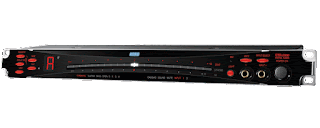Hello and welcome to this week's article!
Today we are going to add another chapter in our drum production serie of articles:
- How to turn drums into midi
- How to mix rock/metal drums
- How to use Drumagog and other drum replacers
- How to use Superior Drummer or Slate Drums sounds in our acoustic drumset
And the topic of today is about how to mix an acoustic drumset using also drum samples to achieve better results.
Let's start by assuming you have read all the articles linked above, so I won't repeat anything, and let's assume that we have a good multitrack project, with decent takes, without too much mic bleed, and that the drum tracks have already been edited. Everything must be ready to mix.
Sometimes when we are in this phase we will realize that the sound is not optimal (maybe because we have used a 100€ all included mic set of 8 microphones, for a value of 12,5€ a microphone), and even if we eq and compress the hell out of each track, literally to the extreme, the result will be extremely poor.
In this case we can use drum replacers to take our acoustic track and add a drum sample on top (or to completely replace it).
In this example we are using Addictive Trigger, which can be downloaded in trial version Here, but we could use any other drum replacer, such as Drumagog, Slate Trigger, Aptrigga etc, the result is the same.
What we need to do is to load an instance of Addictive trigger in the insert of, for example, our kick track, and as a first step adjust the input gain and the sensitivity until we are sure that only the kick hits are catched by the drum replacer. This means that we need to cut out the snare bleed by narrowing down the "scope" of the trigger, until all snare hits are out. (On a side note, some drum replacer after this adjustment lets us also export a midi file with the hits detected, if we want to play them with a drum Vsti).
Now we can choose a kick snare from the list of the available ones (or use the samples of our drum Vsti as explained in one of the articles linked on top), and the idea is to choose the closest one to our ideal, final sound, in order to get there with as few moves as possible. In this phase is good to a/b constantly with our favourite reference track in order to not lose objectivity.
Once we have found the sound we need, we can decide how much to blend it with the original tone, for example 50% to retain some of the original sound, or 100% to completely replace it. Now some drum replacer offers tools to mix the sample directly in the box, otherwise you will need to process it externally, adding comp, eq etc in the vst chain (keeping in mind that doing this way, the processors will effect both the acoustic part and the triggered one, so if we are blending the sampled sound with the original one we might want first to process the acoustic part, and then to add the drum replacer at the end of the chain).
I have used the example of the kick because it is a quite difficult drum part to get properly without expensive gear, so it's the drum part that gets replaced more often, but usually the best results are achieved when adding some sample to basically all drum parts (except the cymbals), and blending everything tastefully.
The same process explained for the kick can therefore be repeated with snare and toms, if needed, and this technique is used by most of the modern studios, since it's a powerful, flexible tool.
Hope this was helpful!




